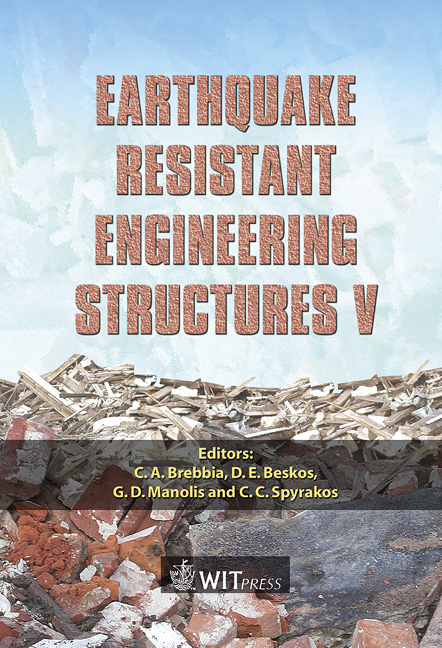Comparison Of Seismic Demands Determined By Nonlinear Static Analysis According To ATC-40, FEMA-356 And EC-8
Price
Free (open access)
Transaction
Volume
81
Pages
10
Published
2005
Size
537 kb
Paper DOI
10.2495/ERES050691
Copyright
WIT Press
Author(s)
V. S. Tsiggelis, A. M. Athanatopoulou & I. E. Avramidis
Abstract
For evaluation and retrofit design of existing buildings and other structures, as well as the design of new construction, inelastic analysis procedures are used. Several publications present performance-based methods that rely on nonlinear static analysis procedures, which involve generation of a \“pushover” curve, but differ in the technique used to calculate the inelastic displacement demand for a given ground motion. The present study consists of an application of the current procedures and a comparison between them. The application examples demonstrate that there are differences in the results produced by the various approaches. Keywords: nonlinear static analysis, pushover, coefficient method, capacity spectrum method, seismic demands. 1 Introduction It is now common practice to estimate seismic demands by nonlinear static analysis of the structure subjected to monotonically increasing lateral forces with invariant height-wise distribution, until a target value of roof displacement is reached. Recently, much work has been done to develop and evaluate simplified methods for estimating peak deformation of inelastic systems, which has led to the \“capacity spectrum method” detailed in the ATC-40 [Procedures A, B and C] [1] and FEMA-274 [2] reports, as well as the \“coefficient method” outlined in the FEMA-356 [3] guidelines and the method suggested in EC-8 [4]. The main objective of the present study is to check the practical applicability of these
Keywords
nonlinear static analysis, pushover, coefficient method, capacity spectrum method, seismic demands.





